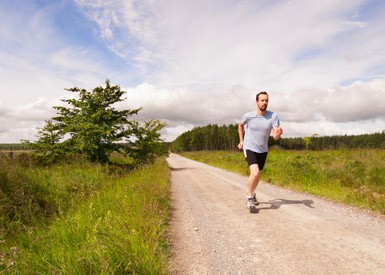The 2014 Seattle Seafair Triathlon and Kids Seafair Triathlon will take place on July 20, 2014. OSS is the Presenting Sponsor for these events and the orthopedic surgeons would like to congratulate the athletes who are coming out to be part of this event.
Training for a triathlon is tough but that’s part of the challenge. Consider this: Four out of five amateur triathletes are injured while training, and three of those four are injured badly enough to affect their daily activities.
The complexity of the sport and broad range of knowledge needed to train and compete safely are contributing factors. The triathlete must learn about appropriate equipment specifications, proper body mechanics, injury prevention and overall training programs that prepare the body for the stresses of triathlon.
Cross-training for three different events also increases the risk of certain overuse injuries, and an untreated injury in one part of the body can lead to problems elsewhere. For example, a knee injury from running can cause extra stress on the back, leading to lower back pain when cycling; and the cumulative effects of swimming and cycling can fatigue calf muscles, making legs more susceptible to injury during a run.
The good news is, most nontraumatic injuries are related to training errors that can be corrected – and professionals with specialized knowledge in triathlon training and injury prevention can help.
Prevention: Training Smart
The best way to avoid a traumatic injury is a training program that balances strength, flexibility and endurance through appropriate weight-lifting, stretching and cross-training. But training techniques are not one-size-fits-all. Every individual has a unique combination of anatomy, strength, endurance, and flexibility – so what works well for one athlete is not always the best advice for another.
Understanding the complex interactions between musculoskeletal groups related to swimming, cycling, and running is essential in triathlon training. An OSS surgeon can evaluate your physical conditioning, analyze your training techniques and correct errors that can lead to future injuries, and provide a training program optimized for you as an individual.
The best training program can’t prevent all injuries. When injuries do occur, there are three things you need to know: (1) how to evaluate the severity of an injury, (2) how to self-treat an overuse injury, and (3) when to seek professional help.
Dr. Weil has this to say about the upcoming triathlon and words of wisdom when it comes to training for a triathlon, “I’d like to congratulate all the triathletes participating in the 2014 Seafair Triathlon! I’d also like to send a special congratulations to the first time triathletes participating in this year’s event. As you all know training for and participating in the sport of triathlon involves a huge commitment on the part of athletes and their families. Unfortunately, sometimes things don’t go as planned and injury can derail even the most experienced triathletes. I have experienced this issue first hand from all perspectives, as a treating physician, as a 2013 Ironman Canada Finisher, and currently as an injured athlete in rehabilitation trying to get back to the sport. When the unforeseen occurs, it is always best to seek medical evaluation. Often times if issues are addressed early on, they can be treated without significant time loss from training and without surgery. It is my goal as a treating physician to understand athletes needs and to work together with athletes to help them return to sport as soon as possible.”
If you believe you are suffering from a sport-related injury and need specialized orthopedic care, the orthopedic surgeons at OSS provide excellent treatment options for your injury. Please feel free to contact OSS at (206) 633-8100 to schedule an appointment.

 Speaking of physical reminders, the change in season is the perfect opportunity to change your sneakers!
Speaking of physical reminders, the change in season is the perfect opportunity to change your sneakers! 
